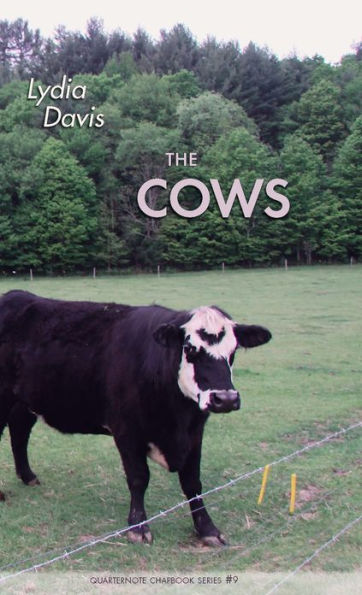The Cows is a close study of the three much-loved cows that live across the road from her. The piece, written with understated humor and empathy, is a series of detailed observations of the cows on different days and in different positions, moods, and times of the day. It could be compared to some sections of Wallace Stevens' "Thirteen Ways of Looking at a Blackbird" or to Claude Monet's paintings of Rouen Cathedral.
Forms of play: head butting; mounting, either at the back or at the front; trotting away by yourself; trotting together; going off bucking and prancing by yourself; resting your head and chest on the ground until they notice and trot toward you; circling each other; taking the position for head-butting and then not doing it.
She moos toward the wooded hills behind her, and the sound comes back. She moos in a high falsetto before the note descends abruptly, or she moos in a falsetto that does not descend. It is a very small sound to come from such a large, dark animal.
The Cows is a close study of the three much-loved cows that live across the road from her. The piece, written with understated humor and empathy, is a series of detailed observations of the cows on different days and in different positions, moods, and times of the day. It could be compared to some sections of Wallace Stevens' "Thirteen Ways of Looking at a Blackbird" or to Claude Monet's paintings of Rouen Cathedral.
Forms of play: head butting; mounting, either at the back or at the front; trotting away by yourself; trotting together; going off bucking and prancing by yourself; resting your head and chest on the ground until they notice and trot toward you; circling each other; taking the position for head-butting and then not doing it.
She moos toward the wooded hills behind her, and the sound comes back. She moos in a high falsetto before the note descends abruptly, or she moos in a falsetto that does not descend. It is a very small sound to come from such a large, dark animal.

The Cows
32
The Cows
32
Product Details
| ISBN-13: | 9781932511932 |
|---|---|
| Publisher: | Sarabande Books |
| Publication date: | 03/29/2011 |
| Series: | Quarternote Chapbook Series |
| Pages: | 32 |
| Product dimensions: | 5.80(w) x 8.80(h) x 0.30(d) |
